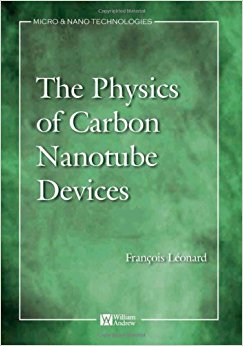Possibly the most impactful material in the nanotechnology arena, carbon nanotubes have spurred a tr
| 商家名称 |
信用等级 |
购买信息 |
订购本书 |
|
|
 |
Physics of Carbon Nanotube Devices |
 |
|
 |
Physics of Carbon Nanotube Devices |
 |

Possibly the most impactful material in the nanotechnology arena, carbon nanotubes have spurred a tremendous amount of scientific research and development. Their superior mechanical and chemical robustness makes them easily manipulable and allows for the assembly of various types of devices, including electronic, electromechanical, opto-electronic and sensing devices.
In the field of nanotube devices, however, concepts that describe the properties of conventional devices do not apply. Carbon nanotube devices behave much differently from those using traditional materials, and offer entirely new functionality. This book - designed for researchers, engineers and graduate students alike - bridges the experimental and theoretical aspects of carbon nanotube devices. It emphasizes and explains the underlying physics that govern their working principles, including applications in electronics, nanoelectromechanical systems, field emission, optoelectronics and sensing. Other topics include: electrical contacts, p-n junctions, transistors, ballistic transport, field emission, oscillators, rotational actuators, electron-phonon scattering, photoconductivity, and light emission. Many of the aspects discussed here differ significantly from those learned in books or traditional materials, and are essential for the future development of carbon nanotube technology.
. Bridges experimental and theoretical aspects of carbon nanotube devices, focusing on the underlying physics that govern their working principles
. Explains applications in electronics, nanoelectromechanical systems, field emission, optoelectronics and sensing.
. Other topics include: electrical contacts, p-n junctions, transistors, ballistic transport, field emission, oscillators, rotational actuators, electron-phonon scattering, photoconductivity, and light emission.
. Covers aspects that significantly differ from those learned in traditional materials, yet are essential for future advancement of carbon nanotube technology.
* Bridges experimental and theoretical aspects of carbon nanotube devices, focusing on the underlying physics that govern their working principles
* Explains applications in electronics, nanoelectromechanical systems, field emission, optoelectronics and sensing.
* Other topics include: electrical contacts, p-n junctions, transistors, ballistic transport, field emission, oscillators, rotational actuators, electron-phonon scattering, photoconductivity, and light emission
* Covers aspects that significantly differ from those learned in traditional materials, yet are essential for future advancement of carbon nanotube technology.
目录 Introduction; Metallic Carbon Nanotubes for Current Transport; Physics of Nanotube/Metal Contacts; Electronic Devices; Electromechanical Devices; Field Emission; Optoelectronic Devices; Chemical and Biological Sensors; References; Index
网友对Physics of Carbon Nanotube Devices的评论
THe book is well written and easy to follow. It covers the basic knowledge of CNTs with developped math models that are easy to follow for a scientist. I recommend it for anyone Ts.
喜欢Physics of Carbon Nanotube Devices请与您的朋友分享,由于版权原因,读书人网不提供图书下载服务




